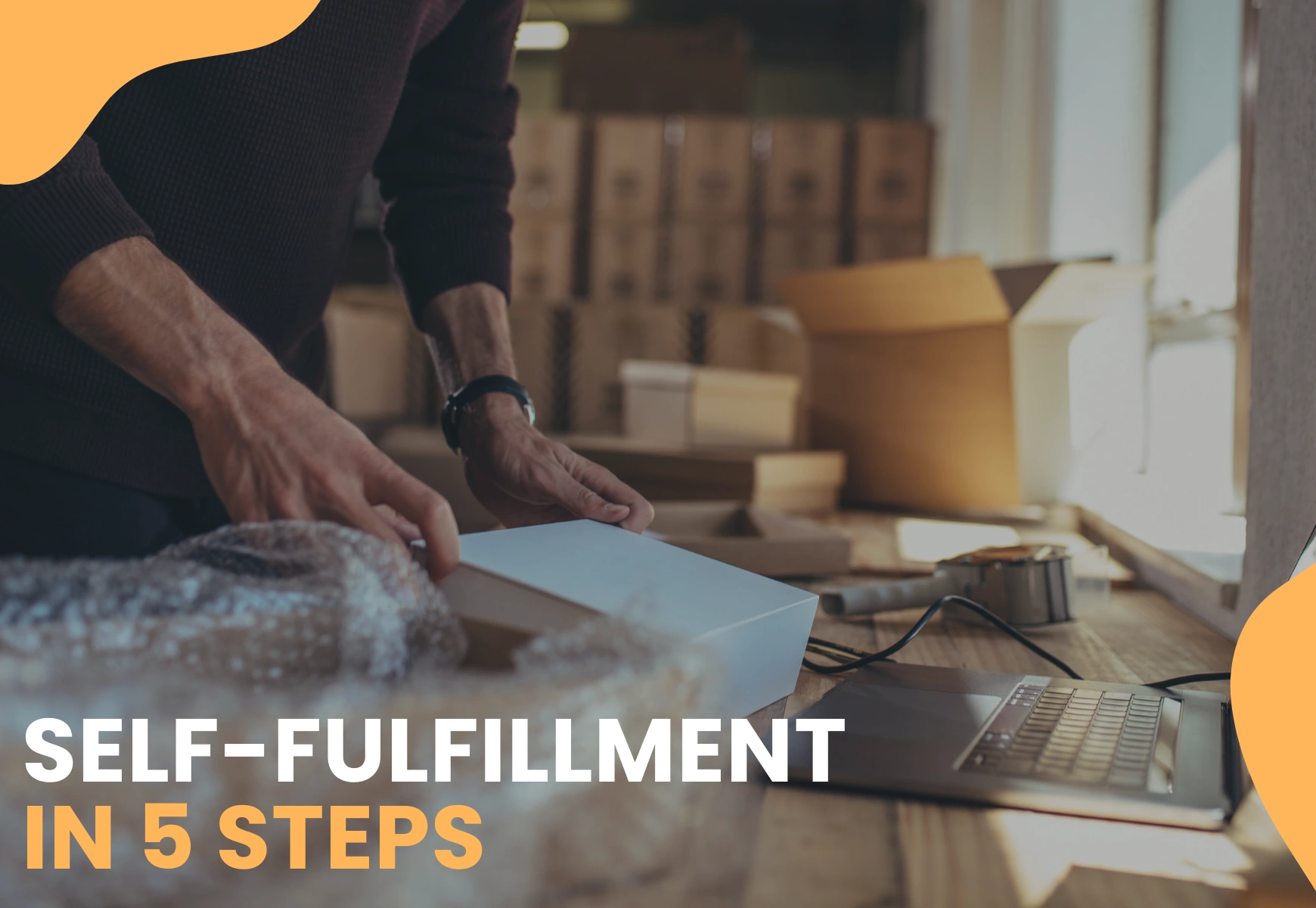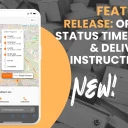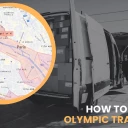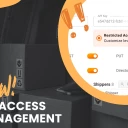Fulfillment logistics in ecommerce
Updated on
May 23, 2024
by
Jennifer Collins

Mobile phones are now accessible to everyon. Because of this online shopping has become more popular. Anyone can now order products easily.
In 2023, sales worth $5.8 trillion happened worldwide. That’s huge. However, this also means that businesses will have to handle more orders than ever as ecommerce is growing quickly.
For a successful order, the customer only has to take two step, order and receive. But if we consider this from the business perspective, fulfillment logistics has a multitude of steps. We’ll discuss that ahead in a while. So, stay tuned.
Table of contents
What is fulfillment in logistics
What is fulfillment in logistics?
Order Fulfillment in E-commerce Process
Manage self-fulfilment in 5 steps
Software available for e-commerce order fulfillment
What is fulfillment in logistics?
Fulfillment logistics is a simple process. It includes picking, packing, and shipping products. This typically occurs in the following way:
- Storage: All products are stored in a warehouse or storage area. They wait there until someone orders them.
- Order Processing: The system locates the item in the warehouse when someone buys something.
- Picking: A worker then goes to the storage spot. They take out the item that was ordered.
- Packing: The item is carefully placed into a box or envelope. This ensures it arrives safely at the customer's place.
- Shipping: Finally, the packaged item is given to a delivery company. They deliver it right to the customer’s doorstep.
This whole process needs to be quick and efficient. That way, customers receive their orders quickly and in good condition. This makes them more likely to shop from the you again.
Options for order fulfillment
Businesses can now fulfill their orders in several ways. Let's discuss the three main ones.
- Self-fulfillment: In this type, the business handles everything itself. You could set up a setup at home. This way, the cost is minimized until you grow a bit.
- Third-Party Logistics (3PL): Once you start growing, you need a bigger warehouse to store your products. That's where you can use 3PL e-commerce fulfillment services. You can store your products in their warehouse and ship them out as well.
- Dropshipping: Now this option is for people who don't have a penny to step. You can build your own store and then ask your supplier to ship the products directly.
What is the Role of 3PL?
Companies that provide e-commerce 3PL services are very important to businesses. They offer specialized services that businesses can use to get help with shipping and handling:
- Storage: They offer space to store inventory.
- Inventory Management: They keep track of how much stock is available. This helps prevent having too many or too few products.
- Order Fulfillment: They collect, pack, and send out orders.
- Returns Management: They handle returns. This makes the process easier for both the business and the customer.
Order Fulfillment in E-commerce Process
Order fulfillment is not one step but rather a process with multiple steps. The products are carefully stored in the warehouse. When someone orders something from your store, the workers find that item, package it, and then ship it to the customers.
This process includes:
- Inventory Management: You keep track of all your products to ensure they are available whenever an order comes in.
- Order Processing: You should always be prepared to handle new orders. This step covers the receipt until the package is prepared for shipment.
- Shipping and Handling: Now it's time to deliver the product. You should be wise enough to choose the right carriers and ensure products are delivered on time.
- Customer Service: If a customer has any issue, provide immediate support. This also includes providing shipping updates and handling returns.
What is Self-Fulfillment?
Self-fulfillment is when a business handles its own order process from start to finish.
This means the business stores its own products, packs them, and then ships them out to customers.
Self-fulfillment is a way for companies to control every step of getting their products to buyers.
Why Choose Self-Fulfillment
Choosing self-fulfillment offers several advantages for e-commerce businesses:
- Control Over Inventory: This way you have complete control over your stock. You can have a more accurate inventory if you fulfill the orders yourself.
- Customization: You also have the ability to personalize the packing. This enhances your brand identity.
- Cost Savings: Eliminating third-party fees can potentially lower costs, which is especially beneficial for businesses with manageable order volumes.
- Faster Response Times: Quicker reaction to order and inventory changes without third-party communication delays.
- Customer Service: Direct handling of customer inquiries and issues, providing more personal customer service.
- Data Security: Better control over customer and business data, reducing the risk of breaches.
- Flexibility: More freedom to experiment with different fulfillment strategies without contractual constraints from third-party providers.
Manage self-fulfilment in 5 steps
The main question here is how to improve the order fulfillment process. If you don't know how anything, follow these 5 steps reviewed in our video and blog:
Step 1: Master your inventory
First, you need to understand your inventory and its requirements. This could include how many products you need, which products perform better than others, and so on.
If you manage your inventory properly, there will be no problems like product shortages. This will ensure you have the right amount of products according to the customers' needs.
- Keep Track: You should use any inventory management software. This software updates product quantities in real-time, making it easier for you to track. This helps prevent scenarios where products are sold but no longer in stock.
- Organize: You should categorize items in your warehouse by type and popularity. By doing thi, it will be easier for your workers to locate and retrieve items quickly, thus reducing fulfillment times.
- Update Regularly: There should be regular inventory audits to verify that the physical stock matches the digital records. Any errors can lead to misinformed business decisions.
Step 2: Streamline order import
The next step is to manage the influx of orders. If your business is doing well, you'll have many orders to fulfill every day. So, it is important to handle these large numbers of orders. This will help you minimize errors.
- Automate: You can use integration tools that connect your e-commerce platform directly with your fulfillment system. This way you can automate the order import process. This will reduce manual data entry and the potential for errors.
- Check for Errors: To make sure there are no errors, implement a protocol for quickly scanning and correcting errors in order details. These errors could be an incorrect product size or shipping address, which can delay processing.
- Organize Orders: You must have a system for prioritizing orders based on shipping urgency or customer value. This way, the products with the highest priority will be processed first, improving customer satisfaction considerably.
Step 3: Find the fastest and cheapest routes
Now that you have the orders in the queue, it's time to optimize your delivery routes. You should find the fastest and cheapest route. This way, your customers can receive their packages quicker, and you will save some bucks in fuel costs.
- Compare Carriers: Don't ever rely on one courier. Analyze and negotiate contracts with multiple shipping carriers to secure the best rates and service. When choosing a carrier, consider delivery speed, reliability, and geographic coverage.
- Route Optimization: To make your routes efficient, use logistics software that uses algorithms to find the quickest and least expensive shipping routes. This can be particularly important for cross-border shipping where routes can significantly impact costs and delivery times.
- Bulk Ship: The best way to reduce shipping costs is by bulk shipping. It means you send the products together which have the same destination. This is also called "freight consolidation" and is useful for both domestic and international shipping.
Step 4: Stay consumer-centric
The above steps were how you can efficiently fulfill orders. But this point is on enhancing customer experience. If you only focus on earning big bucks, you won't be able to build a loyal customer base. So focus on what your customers need.
- Listen to Feedback: If is important to understand what your customers actually need. You can learn this by reading the feedback. You should regularly gather and analyze customer feedback to understand their satisfaction with the shipping and handling of their orders.
- Be Flexible: Nowadays, consumers want a range of shipping options. So, it's up to you to offer a range of shipping options to meet different needs and budgets. Flexibility can be a major competitive advantage in e-commerce.
- Communicate: Last, communicate with your customers as much as possible. You can also implement an automated system to update customers about the status of their orders. This will significantly reduce customer anxiety and decrease the volume of customer service calls.
Step 5: Refine your fulfillment services
Lastly, monitor your strategy closely and make changes regularly based on feedback. This will increase your efficiency, reduce operational costs, and increase customer loyalty.
- Review and Adjust: Continuously assess your fulfillment processes for any inefficiencies or new challenges. Implement improvements regularly to keep your operations agile.
- Upgrade Technology: Stay updated with the latest advancements in fulfillment technology. Consider investments in robotic process automation (RPA), AI for predictive analytics, or advanced WMS to streamline operations.
- Train Your Team: Offer regular training and development programs for your staff. This ensures they know how to use new technologies and processes. Well-trained employees work more efficiently. They also provide better service to your customers.
Software available for e-commerce order fulfillment
It has now become absolutely necessary to use software. Why? Because the e-commerce market is growing very quickly. Due to this, businesses now need to automate e-commerce self-order fulfillment.
Some of these software include:
- Inventory Management Systems: If you have a business, you’d definitely have an inventory too. And to manage that, you need a software. This is where this software comes in. it keeps track of how much stock you have at all times. It also helps you manage your inventory better.
- Order Management Systems (OMS): Next up is the OMS. These systems bring together orders from different e-commerce sites. They give you one place to view and manage orders, making it easier to handle customer service and track orders.
- Warehouse Management Systems (WMS): Now, it you have a warehouse, it software is a must-have. This advanced software helps you run your warehouse better. It controls how goods move and are stored in your warehouse.
- Shipping and Routing Software: After that you’d need a good route optimization software. This tool will help you pick the best shipping companies and routes. They focus on saving money and speeding up ecommerce deliveries.
- Customer Relationship Management (CRM) Systems: Now that your order has shipped, you’ll need this software to serve customers better. It gathers information from various interactions with customers, allowing you to streamline your customer service.
- Analytics and Reporting Tools: Lastly, you need to monitor your business's performance. You can do this by using analytics tools. These tools analyze your fulfillment process's performance. They help you see where things are working well and where they can be improved.
Conclusion
We have already covered everything you need to know. Just remember that it is important to have a solid fulfillment strategy. You can also use software to reduce manual labor. Try out Track-POD software with a 7-day trial.
Track-POD is the best software for automating complex logistics tasks. It can easily manage your fulfillment needs and ensure that every order reaches its destination on time. Thus, you definitely need it to grow your business.




